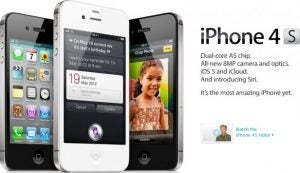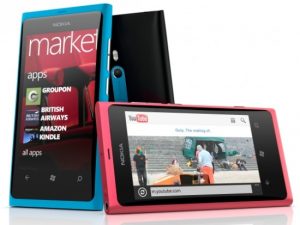Why October 2011 Was The Biggest Month In Phone History

“The more things change, the more they stay the same”
This famous quote is said to come from French novelist Alphonse Karr (1808-90), but its origin is subject to ongoing dispute. As such it offers a perfect summation of the mobile phone sector after perhaps the most tumultuous month in its history.
It all began on 4 October with the launch of the controversial
iPhone 4S. It was followed a day later by the
tragic death of Steve Jobs, arguably ”the” innovator behind today’s
touchscreen smartphones.

Next RIM announced its new BBX operating system. On 19 October Google officially unveiled the most radical overhaul of Android to date with the launch of Ice Cream Sandwich and its corresponding Galaxy Nexus hardware. This week Nokia formally announced its first Windows Phone handsets, the first Nokia Lumia 800 Phone Nokia Lumia 710, marking the start of a sea change for the 146 year old company. Then Sony topped these headlines by buying out partner Ericsson to go at the sector alone.
Meanwhile throughout the month Microsoft rolled out Windows Phone Mango, the update which gets it back into the smartphone game. Even the position of the industry’s major players was shaken up as figures yesterday revealed Samsung passed Apple to become the world’s largest smartphone maker. Further signalling this new world order ZTE continued its relentless climb becoming the fourth largest mobile phone seller and RIM drifted into the dreaded category known as “others“.
And yet… the more things change, the more they stay the same.

The iPhone 4S received the same cries of discontent that met the iPhone 3GS and has yet received even more gargantuan, record breaking sales on release. RIM’s BBX turned out to be just the phone version of QNX which has long existed on the floundering PlayBook. Google continued to be dogged by reports of Android fragmentation (with neglected handsets now dubbed ‘Android Orphans’). The Lumia 800 was also essentially the N9 reissued with new software, with Nokia admitting “When you see the two phones together, you can see it’s basically the same design language and [by not releasing the N9 in the UK] we wanted to make sure in the beginning there wasn’t any confusion for the consumer over which is which.”
Repetitive behaviour was on show too as Sony was strongly linked with a bid for webOS which would return it to a proprietary platform and Samsung really only took the top smartphone vendor spot because “a lot of people held off purchasing an iPhone during this three month period, waiting for the launch of the iPhone 4S in October”. Throughout the period everyone continued to apply for patents and sue one another… sometimes even themselves.
So, other than setting a links record in an article, what does this all mean?

